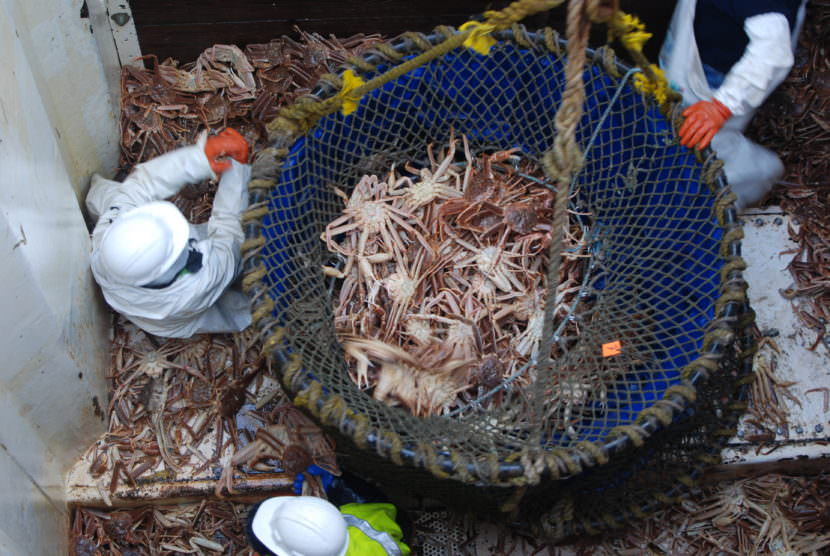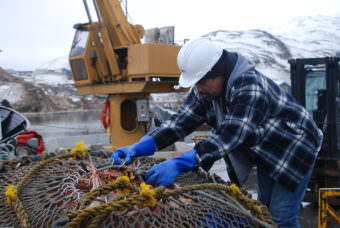
The Bering Sea Bairdi (or Tanner) crab fishery stayed closed this year, for the first time in four years. State biologists decided there were too few crab to safely harvest. But fishermen are questioning that decision. They say there were plentiful Bairdi when they were fishing for other species.
At a Board of Fisheries meeting in Anchorage this week, commissioners will look into the possibility of opening the fishery even in low abundance years.
The crew of the Polar Sea stands at a metal table on the deck, sorting through a fresh pot of crab. They’re looking for Opilio (another snow crab related to Bairdi) keepers. Captain Daher Jorge rolls video on his iPhone and asks for a count.
“How many Opies?” Jorge asked.
“200,” a crew member said.
“How many Bairdi?” Jorge asked.
“100,” the crew member responded.
“This is not like we’re faking it,” Jorge said. “This is just one video. It is reality. It’s right there. This is not going to lie.”
Those 100 Bairdi all go back in the ocean. Had the Bairdi season opened, Jorge would have been able to sell them.
“I mean, it’s a no-brainer,” Jorge said. “Instead of throwing over the side, why we can’t we put one species in one tank and a different species in the other tank?”
Jorge said fishing both species would have reduced bycatch — saving fishermen time and money, and saving the crab population a lot of incidental deaths.
But their experience in the ocean didn’t match the predictions from the Alaska Department of Fish and Game. Management biologist Miranda Westphal said the annual crab survey in October showed low numbers across the board for all species — a trend she connected to warmer ocean waters.
“Everything’s just kind of below threshold,” Westphal said. “We’re not seeing a whole lot of recruitment right now. It’s sort of a theme this season.”
Managers reduced the quota for red king crab by 15 percent, cut the Opilio quota in half, and cancelled the Bairdi season entirely.
With crabbing season now wrapping up, Westphal didn’t want to comment on whether the quotas for Bairdi, or any other species, were appropriate.

But Dave Harris thinks the Department of Fish and Game made a mistake. He’s captain of the Arctic Mariner and has hauled pots in the Bering Sea for more than 40 years. In that time, he said he’s never seen the department get the quotas so wrong, and not just with Bairdi.
“You might see it in one fishery or the other,” Harris said. “But not all three fisheries. Something’s wrong with this picture. Something’s wrong with the model or surveys or something.”
Neither Jorge or Harris is able to attend the Board of Fisheries meetings in person. But they’ve shared their thoughts, videos, and pictures in the hopes of bridging the gap between what they’re seeing and what managers are documenting in their surveys.
The meeting agenda includes proposals that might open the fishery even when stocks are low or permit fishermen to keep some of the crab bycatch that’s thrown back when the fishery is closed.
Because the Board of Fisheries works on a region based schedule, the statewide King, Opilio, and Bairdi crab fisheries won’t be on the docket again until 2019.
Zoe Sobel is a reporter with Alaska's Energy Desk based in Unalaska. As a high schooler in Portland, Maine, Zoë Sobel got her first taste of public radio at NPR’s easternmost station. From there, she moved to Boston where she studied at Wellesley College and worked at WBUR, covering sports for Only A Game and the trial of convicted Boston Marathon bomber Dzhokhar Tsarnaev.




